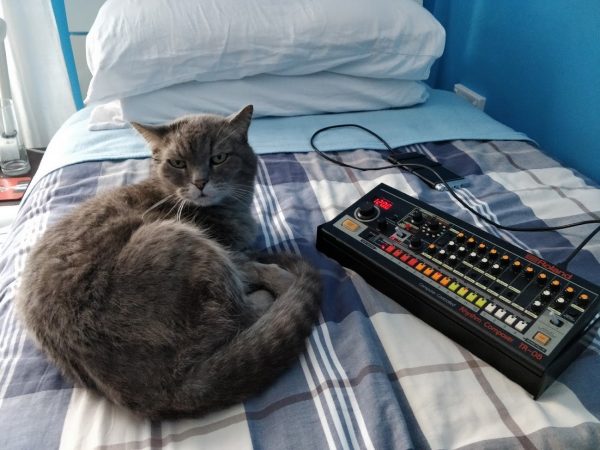
This cat means business is clearly not going to let anyone near its Roland TR-08 drum machine. From Jacque Marliin on Facebook.

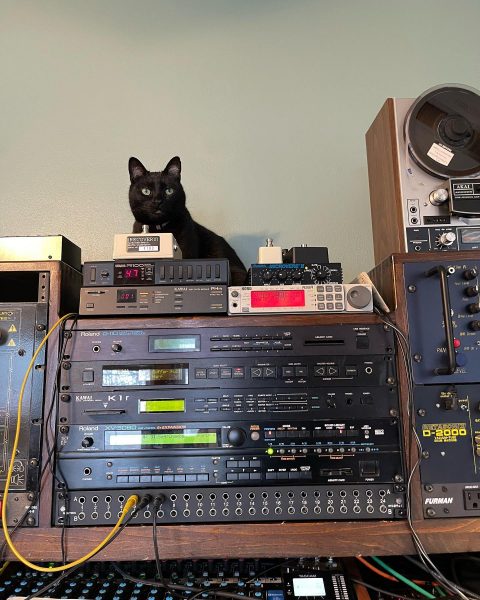
A beautiful black cat with green eyes (like our beloved Luna) sits atop an impressive stack of modules. We see a Yamaha TX81Z (which we also have), as well as a few offerings from Roland, Kawaii, Korg, alases, and more Yamaha. From endmusik_studios via Instagram.
New art for the studio, but it’ll have to wait until the intern finishes recabling everything
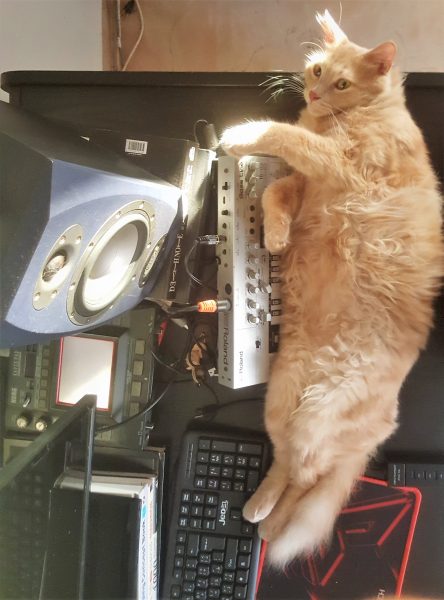
This cat is ready to lay down some acid tracks with a Roland TB-03 boutique bass synthesizer and a Korg Kaoss pad.
Submitted by Elie Sakr via our Facebook page.
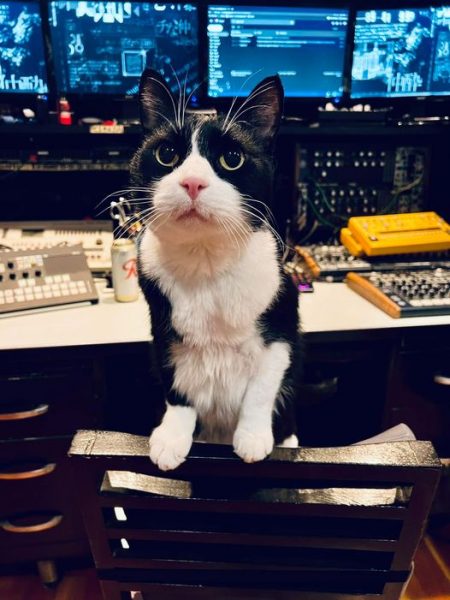
Sascha is back! We see his Squarp Pyramid MK2 along with the usual offerings from Roland, Behringer and Arturia. From Neil Parker of Space Kitty. You can see more photos of Sascha and the late great Blixa via their tags.
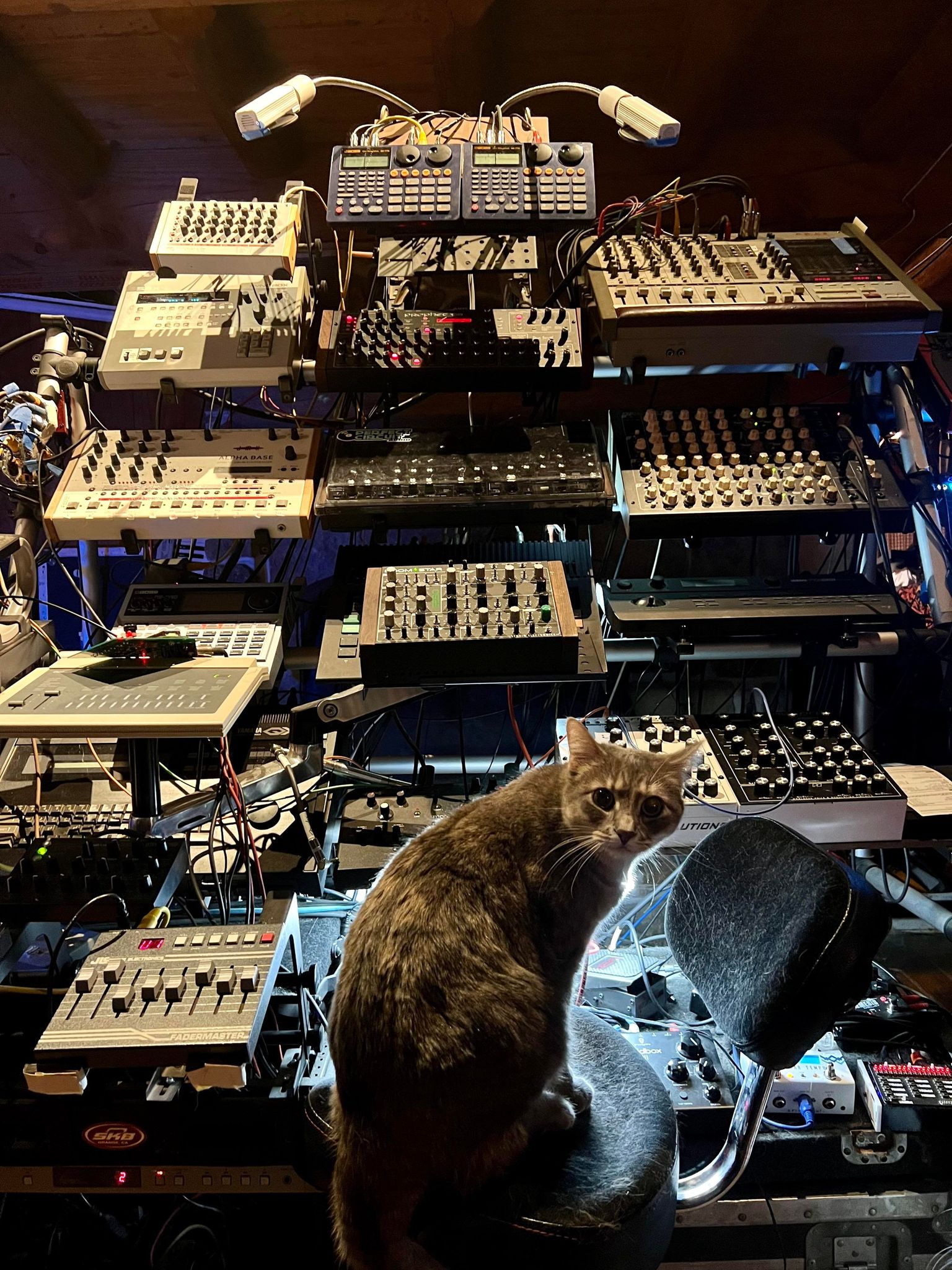
Olive sits confidently in the command chair in front of an impressive array of tabletop modules. Next to her is a rugged JL Cooper fader fox (I had one of these on loan in the 1990s and wish I still had it). We also see a Studio Electronics BoomStar, and a Yamaha 1980s item below it; a JoMox Alpha Base, a Sequential Prophet ’08, sundry rhythm machines from Boss, and much more.
Submitted by Olive’s human Charles Whiley.
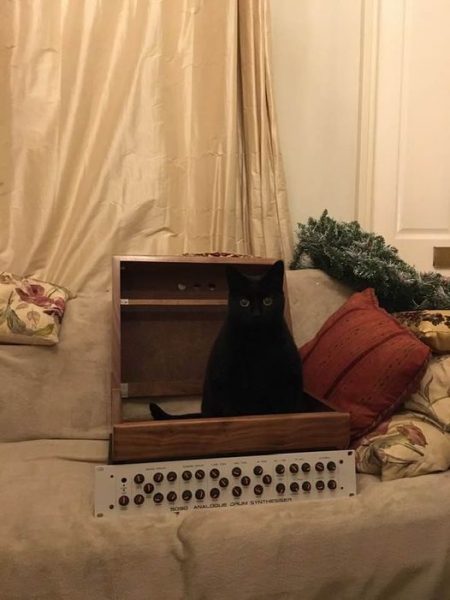
Jet sits somewhat stealthily inside a Ross Lamond VCS3 cabinet. In front, we see a 9090 Analog Drum Synthesizer. From Keith Winstanley via Facebook.
The 9090 is a DIY kit based on the legendary Roland TR-909 drum machine. The original site is here, and there is still an active Facebook group about them. You can find fully build versions there as well as on Reverb, etc.
You can see Jet’s previous appearances on CatSynth here.
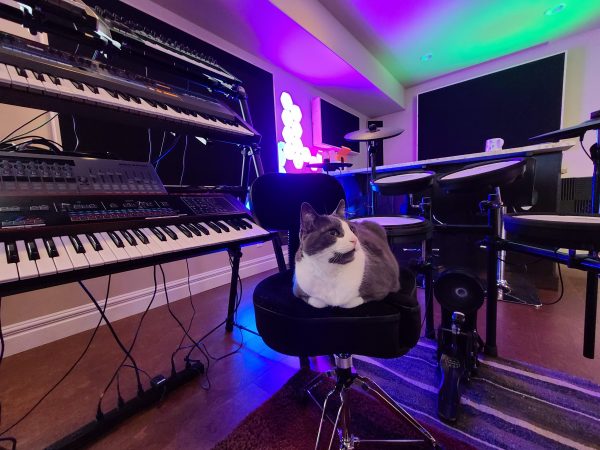
Fang hold court in the middle of a studio featuring vintage Roland Juno 106 and JX-3P synthesizers, as well as a more recent Roland Aira system on top. From @moonrunner83 on Twitter.
Fang wishes everyone Merry Synthmas! Musical keyboard
(He’s obsessed with this drum throne)
Synthmas may be over for the here, but synths and cats live on all year long!
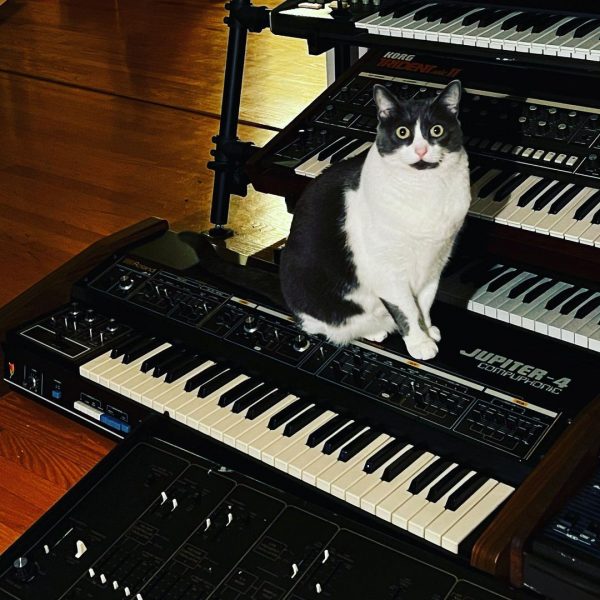
Our friend Gracie, the quality manager at Synthetic Dreamscapes, gives her seal of approval for this beautifully restored Jupiter 4.
“This one’s passed test – ship it!” 🐈
https://www.instagram.com/p/CXrXQkpPvNK/
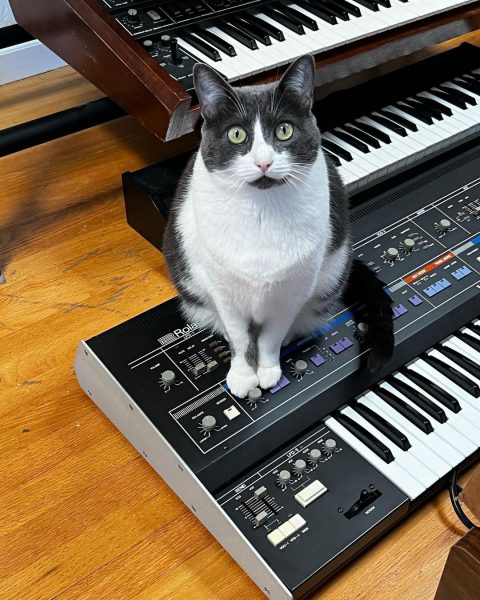
Gracie of Synthetic Dreamscapes stands atop a refurbished Roland Jupiter 6. As the quality inspector, Gracie stands on everything they do.
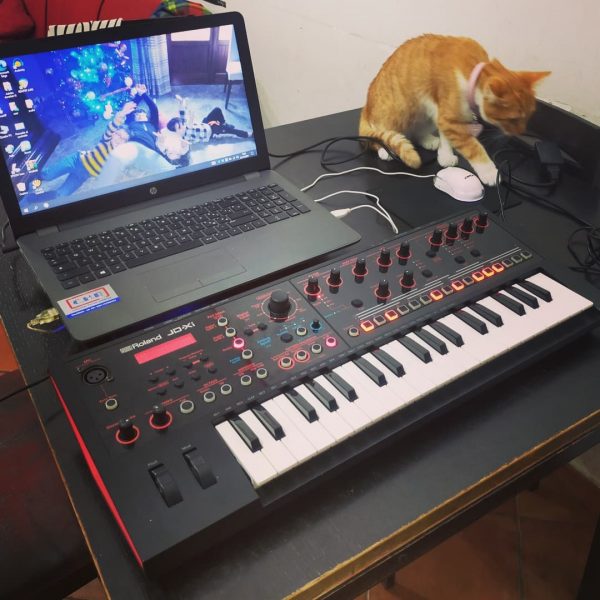
Cat with a Roland JD-Xi synthesizer. From fangu_electronoisemusic via Instagram.
The JD-Xi is a great little instrument with analog moding and a built-in vocoder. I wonder how well that works for cats?